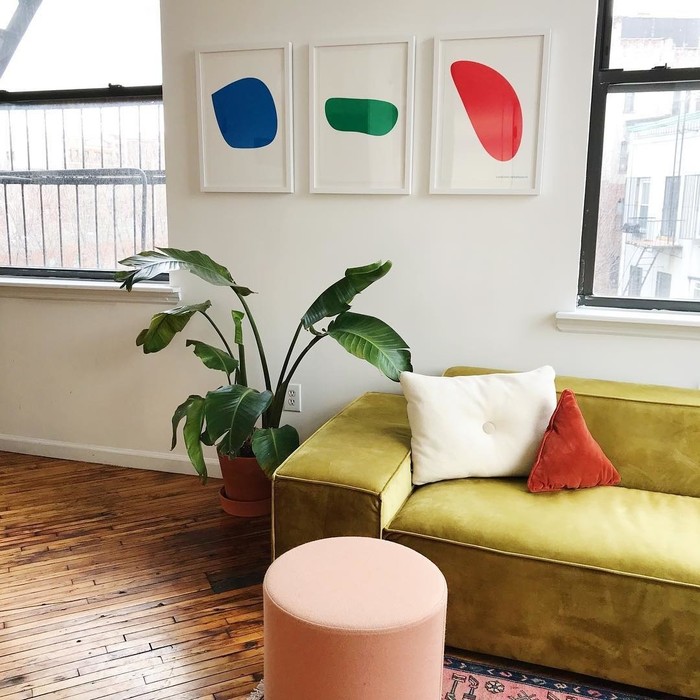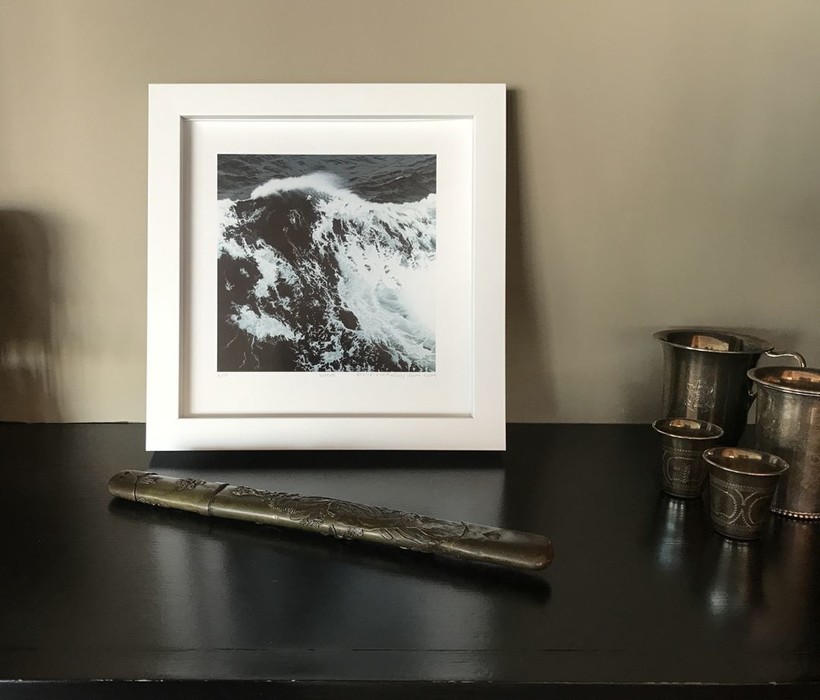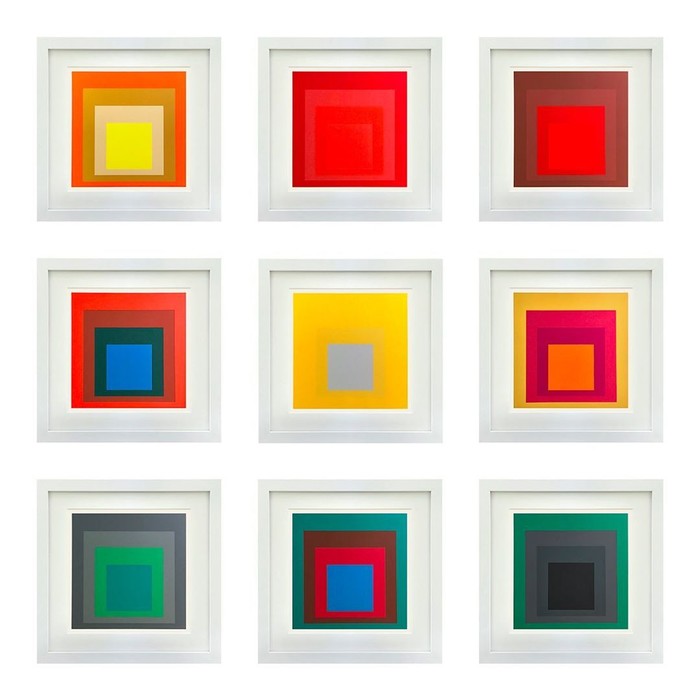The first line of defense for your artwork, glazing is the protective barrier that sits between the contents of any picture frame and the outside environment.
It should be transparent and is usually made of glass or acrylic. This framing component plays a key role in providing your artwork with much needed protection from air pollutants, dust, moisture, temperature fluctuations, and any physical damage.
Most ready-made frames from craft stores or big box retailers like Target or Ikea have flimsy plastic or glass glazes, so these are often the types people are most familiar with when looking for a frame.
With online custom framing (or offline in some custom frame shops) you will find a more diverse selection of glaze options to choose from, many of which have been designed to preserve your artwork according to conservation standards while helping your art and photos look their best.

Image source: Style Me Pretty (via Pinterest)
Glass vs. Acrylic (Plexiglass)
How do you choose between glass and acrylic glazing for your picture frame?
Glass is typically less expensive than acrylic, doesn’t have the kind of static charge that can attract dust, and is more scratch-resistant. However, glass also has its disadvantages.
The cheaper kinds tend to have a noticeable green or blue tint, while acrylic is optically pure. Glass is also much heavier in weight, harder to handle and more fragile than its acrylic counterpart.
At Level Frames, we only use framer's grade acrylic glazing because it is shatter-resistant, much safer to transport, does not transfer heat and moisture to art, and optically high in clarity. We are amongst many in the framing industry who primarily offer acrylic to our customers because it is consistent with our museum quality materials and simply the most effective way to protect and create a stable environment for your artwork.
There are various types of acrylic glazes to choose from, and below we'll introduce the four kinds you're likely to encounter on your custom framing journey.
Standard Picture Frame Acrylic

Image source: Customer photo (Colin B.)
Our Standard glaze is, as its name suggests, the most basic option, with a glossy and slightly reflective finish.
This type of glaze is a great alternative to standard picture frame glass, while still being very affordable.
It is just as thick as its glass counterpart, with the added benefit of being shatter-resistant. This option will work best if you plan to hang your frame somewhere with minimal natural light or your artwork isn’t particularly rare or valuable.
UV Protective Glaze

Image source: Instagram (@clairepeder)
Our UV-protective glaze has all the qualities of standard framing grade acrylic, but with the important added benefit of being designed to filter out up to 99% of ultraviolet rays.
UV rays will cause colors in artwork and photos to fade and paper to yellow over time, so this option ensures that the contents of the frame remain in pristine condition. Both sunlight and indoor lights emit UV rays that can cause artwork to fade and deteriorate.
Select this type of glaze if you're framing precious artwork, light sensitive art (like craft construction paper and cardboard) or if you have plans to hang your frame somewhere where the natural light is plentiful.
When framing comic books, newspapers or magazines, UV protection is highly recommended.
Non-Glare Acrylic

Image source: Customer photo (Maria C.) - Read our customer reviews here
The Non-glare glaze you will find on our site has a matte coating on one side that effectively diffuses light reflected off its surface. This finish is especially useful if your space is brightly-lit as it provides more unhindered viewing of your artwork.
Level's non-glare glaze has the added benefit of protecting your artwork against harmful UV light, so you can rest easy knowing your art can be thoroughly appreciated and safe from discoloration.
If you are framing at home with one of our DIY framing kits and reach the step where you instal this glaze into your frame, one side will be glossy and the other side matte -- this matte finish is the property that cuts down on any apparent glare and reflection. The glossy side should be touching the contents inside the frame.
Note that the matte coating may cause a slight blurring or loss of clarity in details and colors, which will increase the further you move the glaze away from the art. This a trade-off between the other options which are more optically pure.
For this reason, we recommend the UV or standard glaze when your frame has a mat and when you are float mounting your artwork with spacers. Otherwise, the Non-glare is a nice option that allows you to appreciate your artwork, photographs and posters all-year round without worrying about glare.
Optium Museum Plexi

Artist: Josef Albers
The fanciest glaze on the market, Optium Museum Acrylic gives you the best of all worlds. You will find it many of the world's top museums and art galleries.
In addition to virtually eliminating reflections, it provides 99% UV protection, is anti-static, shatter and scratch resistant, without any of the visual-side effects mentioned above. It's virtually invisible whether pressed against your artwork or floated away from it with spacers.
If you are framing a photo or artwork that you expect to display and enjoy for many years to come, this can be an excellent investment. Likewise when framing something extremely special or valuable, this glaze is well with worth the splurge.
Pro Tip: Taking care of your finished frame is just as important as choosing the right materials and components.
Avoid using glass cleaner or paper towels to clean your glaze; stick to isopropyl alcohol or *ammonia-free* glass cleaner with a microfiber cloth. The reason for this is that glass cleaner could result in a cloudy glaze, and paper towels might scratch the surface.
If you have any questions about these materials, or would like some guidance on which glaze is best for your framing project, don't hesitate to reach out to us! You can get in touch with us by chat, email or phone.
Sign up for a Level account below for more tips and tricks about online framing and for $15 off your first framing project!



